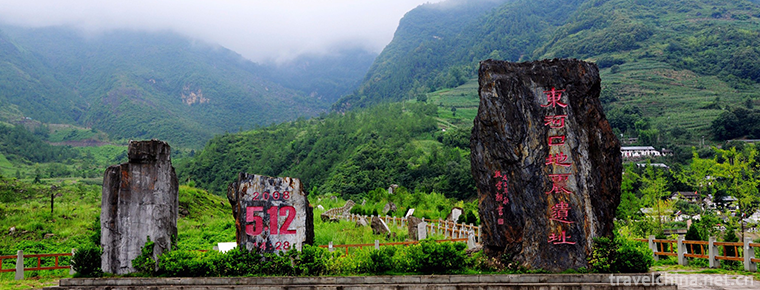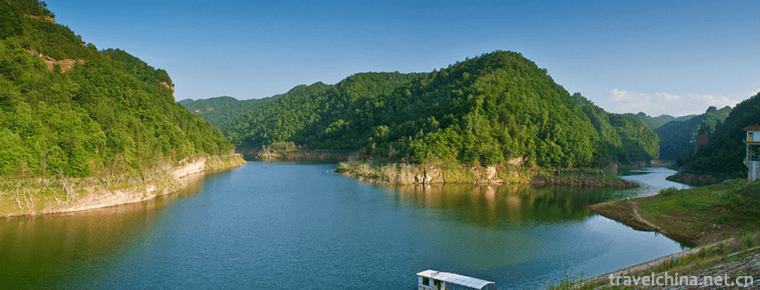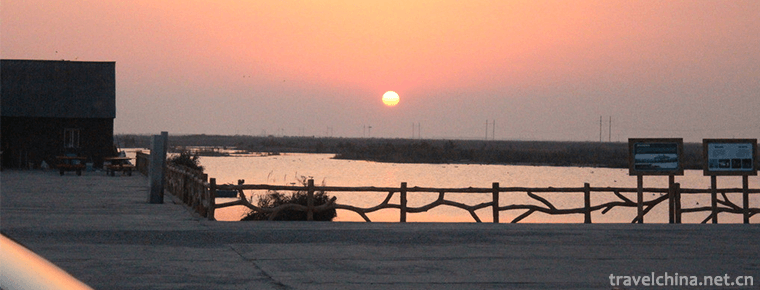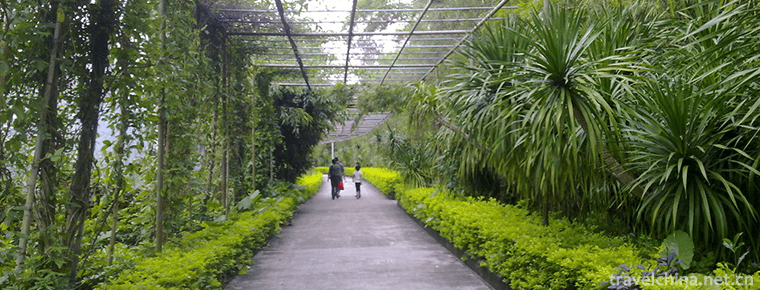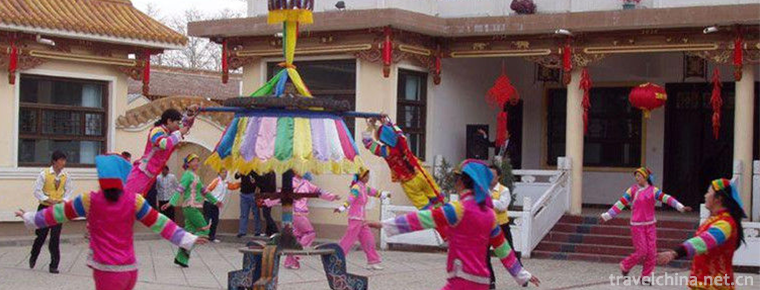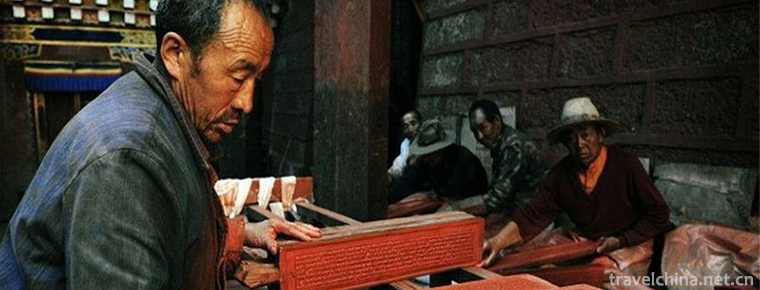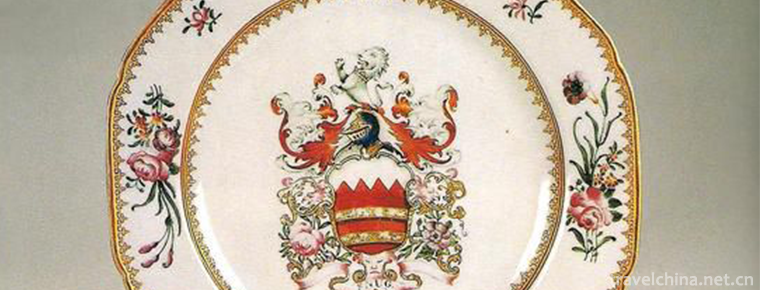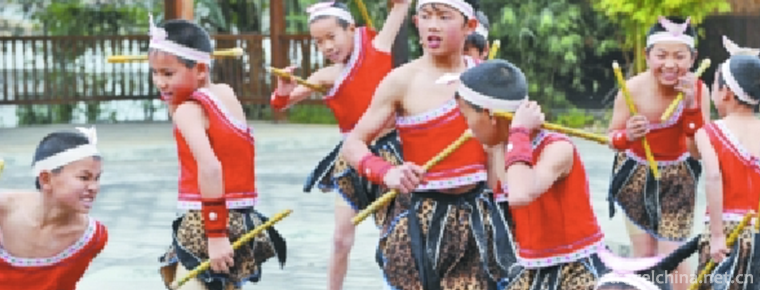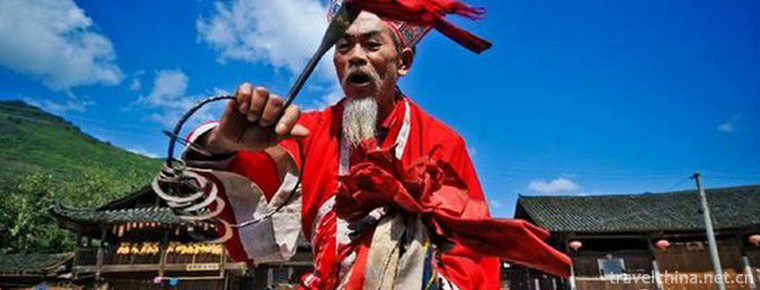Thanksgiving tower
Thanksgiving tower / Baoen tower
Baoen tower is located in Baoen tower Cultural Square, Jiangyang District, Luzhou City, Sichuan Province, commonly known as Luzhou white tower. It is one of the cultural relics under key protection in Luzhou city. Its unique "white pagoda dawn" is one of the "Eight Sights of Luzhou".
Baoen tower was built in the 18th year of Shaoxing in the Southern Song Dynasty (1148). It was built by Feng Ji, an envoy to the south of Luzhou, for repaying her mother's kindness. After three times of maintenance during the reign of emperor Hongzhi of the Ming Dynasty, the fourth year of the reign of Emperor Guangxu of the Qing Dynasty (1878), and 1985, its general outline remains unchanged.
Baoen tower is built from west to East. It is a brick structure with double eaves and seven level pavilions. It is 33.2 meters high. The tower body is octagonal, and the layers are closed up. The 107 level treads circle to the top through the center of the tower. There are 90 niches and 256 deep relief stone sculptures in the tower. The tower base is octagonal with a side length of 4.1 meters. The ground floor is 4.5 meters high. Under the eaves, there are brick imitation wooden buttresses. Under the eaves of the second and third floors, there are bird and beast sculptures, which are well preserved.
Baoen tower was designated as a cultural relic protection unit in Sichuan Province by the people's Government of Sichuan Province in April 1991, and approved by the State Council as the seventh batch of national key cultural relics protection units in May 2013.
Evolution of construction
According to the records of Luzhou records of Guangxu Zhili and the inner title of the tower, the exact construction time of the tower is 1148 (the 18th year of Shaoxing) of Gaozong in the Southern Song Dynasty, and it was built by Feng Ji to repay his mother's kindness.
During the period of Jianyan in the Southern Song Dynasty, there was a lot of wars in different places, and all the temples and scriptures were destroyed.
"Zhiping Temple (where Baoen pagoda is located) is located in Zhiping temple, which is now named Kaifu Temple according to the old annals. It is in the middle of the city, where officials have paid tribute since the Ming Dynasty.
In the 22nd year of Qianlong reign of the Qing Dynasty (1757), Xia Zhaoxin, the magistrate of the prefecture, built a Wanshou opera house in front of the temple, which said, "the whole world is celebrating together.".
In 1807, Shen Shaoxing, the magistrate of the Qing Dynasty, rebuilt the longevity Pavilion at the side of the Dragon God Temple.
In the fourth year of the reign of Emperor Guangxu of the Qing Dynasty (1878), there was peeling between the bricks of the pagoda. The monks were happy to pay for the cultivation, and the people of the state donated money to make it. Therefore, they were swarthy and evil, and replaced with gold bells, cast iron ropes to fasten the roof and the side hall of the main hall, which were repaired and looked at with a new look. "
The temple in volume 2218 of Yongle canon and 412 in the annals of unification of the Qing Dynasty are similar to those recorded in them. Moreover, the textual research on volume 2217 of Yongle Canon clearly shows that the white tower stands in the middle of the city.
Baoen pagoda was painted in 1501, 1878 and 1934, and 500 porcelain Buddha statues were placed in the pagoda.
It was renovated in 1936, in the early years of liberation, and from 1983 to 1985, and the general outline remained unchanged at that time.
Name source
Documentation
"Zhili Luzhou annals" Volume 7 official: "when I was young and lost my father, I left my mother to foster me, but I asked her mother not to do it. On her birthday, outside the gate of the beggars' office, I saw an old woman and said," my son was born today. If I were there, I would not have been exiled. When the family members came to the court, Ji Jin Yu asked, "can you remember the year, month and day of your son's birth?"? If one of the words is not happy, and asked: do you remember in the body? He said, "the two sons were born with the same birth. They were born together with their arms. They were divided into two parts with a knife. One died and the other had long marks on his arm.". "It's my mother," he said, "it's my mother. She's going to smoke, burn incense and tell the sky, kneel and lick her eyes to restore her sight." Because of the construction of this tower, the life is called repaying kindness.
Folklore
It is said that there was a student named Feng Ji in the Song Dynasty. His father died when he was very young. He also had a brother three years older than himself. The brothers were raised by their mother alone. Feng Ji studied hard since he was a child, but his brother only loved labor, not reading. In this way, the mother also had more helpers, which created certain conditions for Xiao Fengji's study. Due to his hard work, Xiao Fengji got a reputation when he was less than 20 years old, and was sent to Luzhou as a pacification history. In the Song Dynasty, pacifying Shi was not only in charge of the army, but also a local governor. Because of his diligent administration, Feng Ji managed Luzhou in an orderly way, and the people lived and worked in peace and contentment. Therefore, he was deeply loved by the people of Luzhou. One year, Feng Ji developed an infectious disease in his hometown. His brother died. His mother ran away from home and begged along the way to Luzhou. One day, Feng Ji comforted the refugees and saw his mother among them. But the old mother was blind and could not recognize that her own son was kneeling in front of her. Feng Ji cried bitterly and said to himself: the unfilial son has made his mother suffer. Feng Ji wanted to treat his mother's eye disease with tears and tongue fluid. This move moved the famous Luzhou doctor at that time. The famous doctor took her to his home, and soon restored her to her sight. After the restoration of the Ming Dynasty, her mother was more strict with Feng Ji, who was more diligent and managed Luzhou better. After Feng's mother died, the gentry and people in Luzhou wanted to raise money to build a tower for her, but Feng Ji was not allowed to do so. It was only after Feng Ji's death that the people of Luzhou built the repaying tower to repay her mother for bringing up a good son, which made Luzhou people live a safe and prosperous life.
Architectural structure
facade
Baoen tower sits from west to East, implying the meaning of Western bliss. Brick structure, 32.16 meters high, octagonal tower. The tower was built on the platform. The octagonal tower was built on the platform. The bottom of the platform was xumizuo. The upper Fang and the lower part of the tower were Xiaohun, "and the use of Xiaohun could not pass the end of the five dynasties at the earliest.". There are GouLan, Dougong and a flat seat on it. The tower base is octagonal, each side is 4.1 meters long, the bottom diameter is 10 meters, and the height is 4.5 meters. The tower body is octagonal. Because of the emergence of the eight trigrams orientation schema in the Song Dynasty, everything should be combined with the eight trigrams
The plane of the tower changed from quadrilateral to octagonal, so after the Song Dynasty, the plane of the tower was mainly octagonal. Eight sides and eight corners symbolize eight directions. Together with the "ten sides" of the upper and lower parts, it is the pure land of light. In appearance, from the fourth layer, the height and width of the layer are decreasing, and the whole outline is slightly curled up. The appearance is even and beautiful. The base and the bottom of the tower are richly decorated. In addition to the hidden chair pillars, the forehead, the bucket arch, the door and the window, the tower is decorated with heavenly king, Li Shen, tower building and various decorative patterns. It is quite different from the simple and simple forms of foreign influence in the early Northern Wei Dynasty. There are four doors and four niches at the bottom of the tower. There are caves in the East, West, North and south. There are small niches on the two walls of the corridor. There are statues of Feng Ji who built the tower. There are reliefs on the other four sides.
Tower body
The eight corners of the tower are set with imitation wood columns leaning against the wall, and "circular columns are used in brick towers, and they are popular after the Tang Dynasty. There are architraves on the columns, which are aligned at the beginning of the corner columns.". Lotus petals decorate the corbel column, with flat Fang Chengcang Dou arch. There are two jumping arches in the bucket arch, and the corner on the corner post is paved. Beside the Big Dipper, a 45 degree oblique arch is used to make a supplementary one. Each layer of the tower is built at each corner of the column, and the upper part is brick bucket arch, and the upper part of each layer of bucket arch is built with water chestnut teeth.
From the bottom to the third floor, the upper and lower eaves of bao'en tower are basically the same. From the fourth floor to the top layer, the upper eaves are obviously smaller than the lower eaves. The section is slightly concave and the layers are closed up. Under the eaves of the decorative content, such as fairies, birds and animals, landscape flowers and trees, auspicious words, geometric patterns, such as the second level under the eaves relief auspicious animals, four treasures of the study and other decorations. At the third level, the images of pigs, cattle, sheep, dogs and farmland and forest were applied, which added a lot of luster to bao'en tower.
top of a tower
There are four bronze statues of Lishi in southeast, southwest, northwest and northeast. The brake is composed of base, waist lotus platform, bowl covered phase wheel, Huagai, Baoguang, Yuanguang, Yangyue, etc., which is basically the same as the popular tower brake in Song Dynasty. The reason for this is that "heaven is on the top, it is round, and it takes days to develop to a higher level.".
Shape
Baoen pagoda has the characteristics of dense eaves Pagoda in appearance. It seems to keep the ancient style before the Tang Dynasty. The core column is octagonal, with 107 steps circling through the center of the tower.
Baoen tower has its own special architectural form. The octagonal seven level tower with double eaves is very strange. So far, no pagoda is the same. The height of the tower is less than 30 meters, but there are 13 eaves. The use of double eaves makes it very similar to the dense eaves tower. The interior is actually seven stories. In some parts, the height of one floor accounts for two eaves. The craftsman can strengthen his towering feeling by adopting such treatment method.
Cultural value
Value of cultural relics
According to the records of Luxian County, there are 48 Buddhist Sutras in the Central Plains of the pagoda, each of which is 48, which has disappeared with the passage of time. During the "Cultural Revolution", the decoration on the top of the tower, the stone statues inside the tower, and the porcelain Buddha statues were completely destroyed. However, there are still 90 niches and 256 deep carved stone carvings with typical Southern Song style in the tower, which have a very obvious relationship with the adjacent Dazu stone carvings. In particular, Feng Ji stands on the seventh floor, which is well preserved. Feng Ji, wearing a silk scarf and casual clothes, held Ruyi in both hands, stood in the West with dignity and solemnity. Many carved gods, whether Buddhas, Bodhisattvas, heavenly kings, Arhats, etc., have become Chinese faces and costumes, mostly in Song Dynasty clothing styles. Buddha statues can be roughly divided into two categories: one is the statue of Buddha and Bodhisattva, and the other is Buddhist stories. Buddha statues include Amitabha Buddha, Huayan three Saints (Sakyamuni, Manjusri, Puxian), peacock Ming king and Guanyin, with smooth and lifelike characters.
Religious culture
Because of its special material and technical breakthrough, the pagoda is more fire-resistant and climate change than wood structure. Therefore, when Kaifu temple has been rebuilt again and again. The Baoen tower, with its height of 32 meters, is enough to "be able to reach the top of the mountain and see the small mountains". "Viewpoint mode and landscape effect": "the first is the belief type view mode with reverence and dignity, which is usually close to the distance and has a larger elevation angle; the other is the view mode of appreciating beautiful scenery, with the distance becoming longer, the elevation angle becomes smaller, and the best viewing angle is about 9-12 degrees, which has a relaxed atmosphere and a strong sense of space." Once upon a time, the great image of Marx shocked people The spirit is oppressed under the weight of material, and the sense of depression is the starting point of worship. Thanks to its unique structure, abundant and exquisite statues and carvings, Baoen pagoda makes it easier and more intuitive to spread and inherit Buddhist culture.
Filial piety culture
The Song Dynasty is the revival of Confucianism, and a new Confucianism - neo Confucianism - neo Confucianism emerged. The school of Song Dynasty was based on the Northern Song Dynasty, and the Southern Song Dynasty was the development period of Neo Confucianism. The emergence of Neo Confucianism in the Song Dynasty is the result of the infiltration of Confucianism, Buddhism and Taoism since the Wei, Jin and southern and Northern Dynasties. It is a huge system based on Confucianism and absorbing Buddhism and Taoism. Neo Confucianism attaches great importance to "filial piety". Baopuzi said: "those who want to be immortal should be based on loyalty, filial piety, harmony, obedience, benevolence and faith." In the annotation of Tao Te Ching: "if the six parents are not in harmony, there is filial piety." after the six parents are not in harmony, there are filial sons and loving fathers. "Xiaojing Jizhu" says: "therefore, from the son of heaven to the common people, filial piety has no end, and those who suffer less than that do not have it." It shows that everyone attaches importance to filial piety. The Taoist classic "Sanping economic cooperation school" also points out that "the death of a filial son of Shangshan is an act. The party respects the Tao and dares not to worry about his parents. Living in the party is good at raising his parents. After he was born, he has known something and never committed a serious crime. This is shangxiaozi." My mother begged for many years, but she felt that she was owed by her mother, so she built a pagoda to repay her kindness. Buddhist scholars have many expositions on Taoism, among which the most important one is the explanation of Jizi in volume 8 of Tan Jin Ji by Qi song, a famous Zen monk in the Northern Song Dynasty: "Confucianism governs the world, and Buddhism governs the mind". Both complement each other and are indispensable. In addition, he wrote the theory of filial piety that "all religions are concerned with husband's filial piety, and Buddhism is highly respected."
There are a lot of stories about the purpose of kneeling and licking his mother and the story of building a pagoda, etc. Filial piety is an important virtue of Chinese tradition, and Feng Ji, as a great master of Confucianism and Buddhism, is practicing it. Therefore, in order to repay the mother's kindness, the tower was built and repaired many times by later generations, not only for this, but also because of the "filial piety" cultural and historical monument. The filial piety culture advocated by Baoen tower has practical educational significance.
environmental value
Baoen pagoda expresses environmental intention through the relative scale of human body. There are many examples in Buddhist architectural environment. The pagoda, with its scale far beyond the common people, makes the environment overwhelming. According to the agreement of sensory psychology, environmental meaning can also be transmitted.
Baoen tower adjust the way of vision is the use of roll kill, side corner, cornice and white based cold and warm color contrast to achieve. Bao'en tower stands out from other things with its absolute flying posture. The external contour line points directly to the skyline, while the Mahavira hall and other small wooden works only serve as a foil for "retreat" and form a good landscape effect. Due to the equal emphasis on Buddhism and Taoism in the Song Dynasty, there were many such buildings. According to Pingjiang map, there are more than 100 temples and temples. The larger temples have tall towers, such as Baoen temple tower, Luohan Temple twin tower and Yunyan temple tower in the north of the city, which reflect the important position of religious buildings in the city. "Due to the proper location of these high-rise buildings and the good coordination with urban roads and rivers, they form a good urban landscape and form a rich and beautiful three-dimensional urban outline."
Bao'en tower naturally protects the nearby landscape. Rivers, green trees and buildings are full of vitality, which can be said to play a positive role in the ecological environment.
Cultural relics protection
In April 1991, Baoen tower was designated as a cultural relic protection unit in Sichuan Province by the people's Government of Sichuan Province.
In 1999, Luzhou carried out the protection plan of famous historical and cultural city, with an investment of 41 million yuan, packaging Baoen tower, demolishing and removing the houses around bao'en tower, and restoring some ancient buildings, covering an area of 25000 square meters.
From 2000 to 2001, Luzhou municipal government organized a team of experts to repair Baoen tower, demolished the old buildings around Baoen tower, renovated the tower, installed night lights, expanded the square green space, and built a music fountain, which became a major cultural relic landscape in downtown area.
In May 2013, bao'en tower was approved by the State Council as the seventh batch of national key cultural relics protection units.
In October 2015, Luzhou city plans to carry out protective repair on Baoen tower and carry out field investigation. The investigation contents include: investigation and batch sampling of white tower exterior and interior facade paint; experimental analysis of sampling, such as material ratio, bone particle size, saturated water absorption rate, density, etc. The field investigation and experiment will provide scientific basis for the protection project of Baoen tower, a key cultural relics protection unit in China.
In July 2016, Baoen tower cultural relics maintenance and protection project was officially launched. Professor Dai Shibing of Tongji University was invited to restore the Baoen tower with the formula of "Song Dynasty paint" and apply it to the reconstruction of the tower body. There are five layers of plastering on the wall of Baoen tower. The first layer is the original plastering of Song Dynasty, which is off white. In Yuan Dynasty, Ming Dynasty, Qing Dynasty and modern times, Baoen tower was repaired many times, and the plastering was different. In the restoration of the interior ground of bao'en tower, concrete will be used. It will also restore the wind chimes on beltata. After the repair, Baoen tower will completely present the original style of Song Dynasty.
social influence
In September 2016, Sichuan Opera "gratitude" was premiered in Luzhou. It was the first large act drama created by Luzhou during the 13th Five Year Plan period, starring sun Yongbo and Wang Yumei, the winners of Luzhou plum blossom awards. The plot of the story of gratitude is based on the folktales related to the tower of gratitude, and the story of the Southern Song Dynasty when Luzhou appeased Feng Ji and his mother as the main line, carrying forward the traditional Chinese filial piety.
Tourism information
Traffic information
Baoen tower is located on the main road of Jiangcheng in the center of Luzhou City, opposite to Bubugao supermarket. You can take bus No.20, 148, 17, 114 (as long as you can go through the main road) and get off at shuijinggou to get to Baoen tower scenic spot.
details
Ticket information
Free Admission
Opening Hours
Open all day
Surrounding scenic spots
Luzhou Laojiao tourist area, Guojiao square, longtouguan, Luzhou Laojiao cellar group and wine making workshop, baizitu square

-
Donghekou Earthquake Relics Park
Donghekou Earthquake Site Park is the first earthquake site protection memorial site of Wenchuan Earthquake, located in Qingchuan County, Guangyuan City, Sichuan Province.
Views: 164 Time 2018-12-20 -
Yunya Temple Scenic Area
Yunya Temple Scenic Area is a comprehensive scenic area, which is represented by the unique Danxia landform on the Loess Plateau, and is composed of abundant forest resources.
Views: 138 Time 2018-12-22 -
Yellow River Estuary Ecotourism Area
The Yellow River Estuary Ecotourism Area is located in the Yellow River estuary area of Dongying City, Shandong Province. It has unique ecotourism resources of the Yellow River Delta.
Views: 152 Time 2019-01-18 -
maoming forest park
Maoming Forest Park is located in the western suburb of Maoming City, Guangdong Province. It is only 12 kilometers away from the urban area and covers an area of more than 4500 mu.
Views: 185 Time 2019-02-07 -
Yasuaki
Anzhao is an ancient Tu dance. It's popular with mutual aid. When celebrating festivals, harvest celebrations and weddings, people gather in the courtyard or on the wheat threshing ground to dance the.
Views: 186 Time 2019-04-02 -
Tibetan Engraving and Printing Techniques
Tibetan engraving and printing skills of Dege Printing Institute, local traditional handicraft skills of Dege County, Sichuan Province, and one of the national intangible cultural heritages..
Views: 357 Time 2019-04-05 -
Chengdu lacquer art
Chengdu lacquer art, the traditional handicraft of Chengdu City, Sichuan Province, is one of the national intangible cultural heritage..
Views: 159 Time 2019-04-18 -
Firing Techniques of Guangcai Porcelain
Guangcai Porcelain Firing Technology, a local traditional handicraft in Guangzhou, Guangdong Province, is one of the national intangible cultural heritages..
Views: 85 Time 2019-05-01 -
Maonan people beat monkey drum
"Monkey Drum Dance" is a traditional dance of Maonan nationality in Guizhou Province, which is used for funeral activities and performed by wizards. It is spread in some villages of Pingtang.
Views: 88 Time 2019-05-26 -
Timago of Tujia Nationality
The Tujia Tima song, also known as the "Tujia Tima Goddess Song", is an ancient song sung in Tujia language in the activities of Tujia Tima. It mainly distributes in Longshan, Yongshun, Baoj.
Views: 279 Time 2019-06-23 -
Beijing Union University
Beijing Union University was founded in 1985 by the Ministry of education. It is a comprehensive university in Beijing. Its predecessor was the 36 University branches in Beijing in 1978. After more th.
Views: 160 Time 2019-09-06 -
Yibin landform
The topography of Yibin City is high in the southwest and low in the northeast. In the west, there are yuxu of Liangshan and Xiaoliangshan, and Laojun Mountain is the highest point of Wuzhi Mountain in Pingshan County with an altitude of 2008.7 meters;.
Views: 284 Time 2020-12-18
